
Mezcal is a distilled alcoholic beverage made from any type of agave. The word mezcal comes from Nahuatl mexcalli[meʃˈkalːi], which means "oven-cooked agave", from metl[met͡ɬ] and ixcalli[iʃˈkalːi].
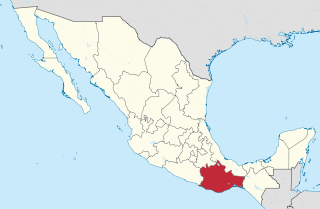
Oaxaca, officially the Free and Sovereign State of Oaxaca, is one of the 32 states that compose the Federative Entities of Mexico. It is divided into 570 municipalities, of which 418 are governed by the system of usos y costumbres with recognized local forms of self-governance. Its capital city is Oaxaca de Juárez.
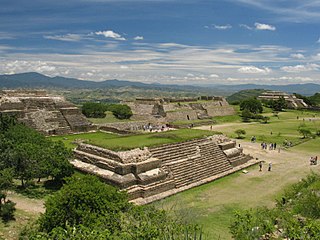
The city and municipality of Oaxaca de Juárez, or Oaxaca City, is the capital and largest city of the eponymous Mexican state. It is in the Centro District in the Central Valleys region of the state, in the foothills of the Sierra Madre at the base of the Cerro del Fortín, extending to the banks of the Atoyac River. Heritage tourism makes up an important part of the city's economy, and it has numerous colonial-era structures as well as significant archeological sites and elements of the continuing native Zapotec and Mixtec cultures. The city, together with the nearby archeological site of Monte Albán, was designated in 1987 as a UNESCO World Heritage Site. It is the site of the month-long cultural festival called the "Guelaguetza", which features Oaxacan dance from the seven regions, music, and a beauty pageant for indigenous women.

Monte Albán is a large pre-Columbian archaeological site in the Santa Cruz Xoxocotlán Municipality in the southern Mexican state of Oaxaca. The site is located on a low mountainous range rising above the plain in the central section of the Valley of Oaxaca, where the latter's northern Etla, eastern Tlacolula, and southern Zimatlán and Ocotlán branches meet. The present-day state capital Oaxaca City is located approximately 9 km (6 mi) east of Monte Albán.

The Chinantec or Chinantecan languages constitute a branch of the Oto-Manguean family. Though traditionally considered a single language, Ethnologue lists 14 partially mutually unintelligible varieties of Chinantec. The languages are spoken by the indigenous Chinantec people who live in Oaxaca and Veracruz, Mexico, especially in the districts of Cuicatlán, Ixtlán de Juárez, Tuxtepec and Choapan, and in Staten Island, New York.

The Isthmus of Tehuantepec is an isthmus in Mexico. It represents the shortest distance between the Gulf of Mexico and the Pacific Ocean. Prior to the opening of the Panama Canal, it was a major overland shipping route known simply as the Tehuantepec Route. The name is taken from the town of Santo Domingo Tehuantepec in the state of Oaxaca; this was derived from the Nahuatl term Tēcuāntepēc.

Oaxaca cheese, also known as quesillo, is a white, semihard cheese that originated in Mexico. It is similar to unaged Monterey jack, but with a texture similar to mozzarella or string cheese.

The Tehuantepec jackrabbit is easily distinguished from other species of jackrabbits by two black stripes that run from the base of the ears to the nape, and by its white flanks. Underparts are white, upperparts are bright-brown washed with black, rump is gray, and the tail is black. This leporid is one of the largest jackrabbits and has large ears and legs. Adults weigh about 3500 to 4000 grams.
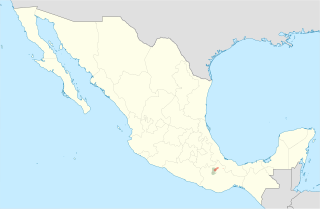
Cuicatec is an Oto-Manguean language spoken in Oaxaca, Mexico. It belongs to the Mixtecan branch together with the Mixtec languages and the Trique language. The Ethnologue lists two major dialects of Cuicatec: Tepeuxila Cuicatec and Teutila Cuicatec. Like other Oto-Manguean languages, Cuicatec is tonal.

The Sierra Madre de Oaxaca pine–oak forests is a tropical and subtropical coniferous forests ecoregion in Southern Mexico.

The Sierra Madre de Oaxaca is a mountain range in southern Mexico. It is primarily in the state of Oaxaca, and extends north into the states of Puebla and Veracruz.

Malaxis, commonly called adder's mouth, is a genus of terrestrial and semiepiphytic orchids. The generic name signifies "smooth" and alludes to the tender texture of the leaves. There are approximately 182 species, found mostly in tropics but with some species in temperate regions.

Ixtlán de Juárez is a town and municipality in the Mexican state of Oaxaca about 65 km north of the city of Oaxaca on Federal Highway 175 towards Veracruz. It is part of the Ixtlán District in the Sierra Norte de Oaxaca region.

Malaxis monophyllos, the white adder's mouth, is a terrestrial species of orchid. It is widespread across much of Europe, Asia, and much of southern Canada. In the United States, it grows mostly in southern Alaska, New England and the Great Lakes region, with isolated populations reported from Colorado and California.
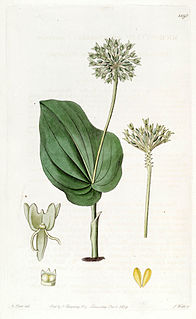
Malaxis unifolia, or the green adder's-mouth orchid, is a species of orchid occurring from eastern and central Canada, the central and eastern United States, Mexico, Central America and the Greater Antilles.

The 1931 Oaxaca earthquake affected portions of southern Mexico on January 14 at 18:50 MST. It registered a magnitude of 8.0 on the surface wave magnitude scale and had a maximum perceived intensity of X (Extreme) on the Mercalli intensity scale.

The 2012 Guerrero–Oaxaca earthquake struck southern Mexico with a moment magnitude of 7.4 at on Tuesday, 20 March. Its epicenter was near Ometepec, in the border between the states of Guerrero and Oaxaca. With a shallow focus of 15 to 20 km, the earthquake caused strong shaking over a large area along the Oaxaca–Guerrero border and the adjacent Pacific coastline. Significant tremors were felt in areas up to several hundred kilometers away, including Mexico City and also in Guatemala. Two people were killed and over 30,000 houses were damaged or destroyed.

Oaxacan cuisine is a regional cuisine of Mexico, centered on the city of Oaxaca, the capital of the state of the same name located in southern Mexico. Oaxaca is one of Mexico's major gastronomic, historical, and gastro-historical centers whose cuisine is known internationally. Like the rest of Mexican cuisine, Oaxacan food is based on staples such as corn, beans and chile peppers, but there is a great variety of other ingredients and food preparations due to the influence of the state's varied geography and indigenous cultures. Corn and many beans were first cultivated in Oaxaca. Well known features of the cuisine include ingredients such as chocolate, Oaxaca cheese, mezcal and grasshoppers (chapulines) with dishes such as tlayudas, Oaxacan style tamales and seven notable varieties of mole sauce. The cuisine has been praised and promoted by food experts such as Diana Kennedy and Rick Bayless and is part of the state's appeal for tourists.
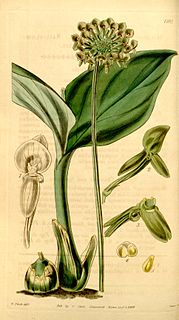
Malaxis histionantha is a species of orchid native to Latin America. It is widespread from Mexico to Argentina. It generally has two leaves and a more or less spherical cluster of small green flowers.
Malaxis macrostachya is a species of orchid widespread across much Mexico, Central America, and the southwestern United States. It has only one leaf per plant, along with a tall flower stalk with as many as 160 tiny, green flowers.
















